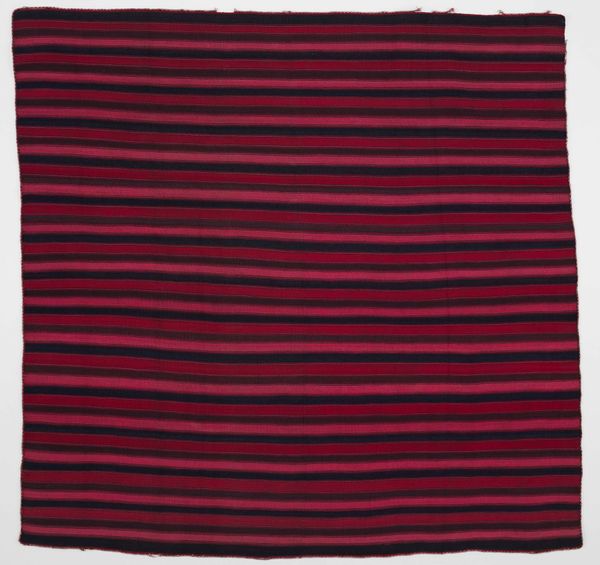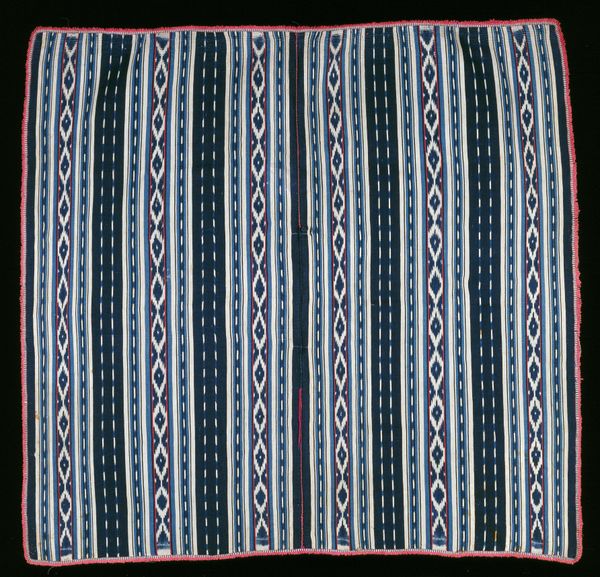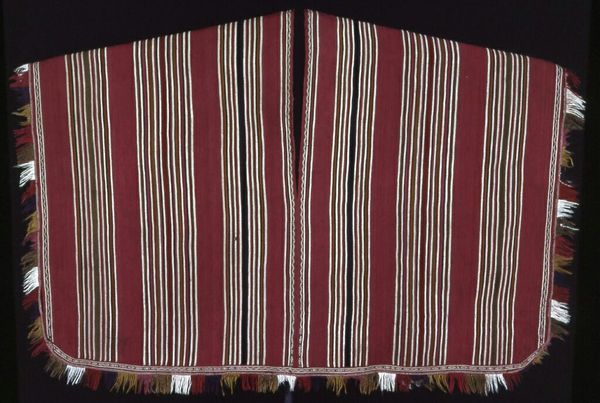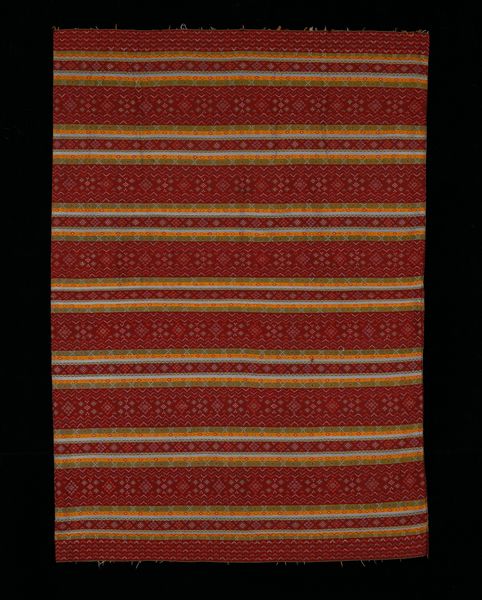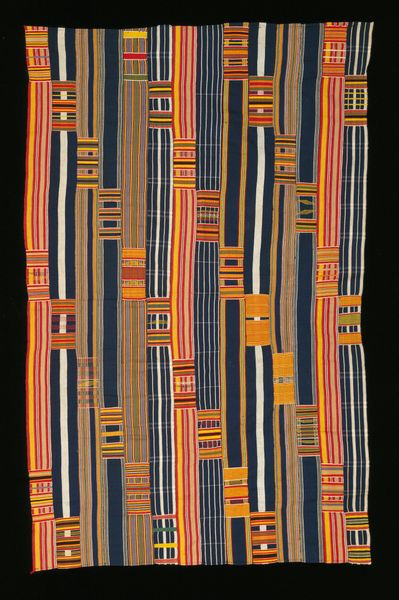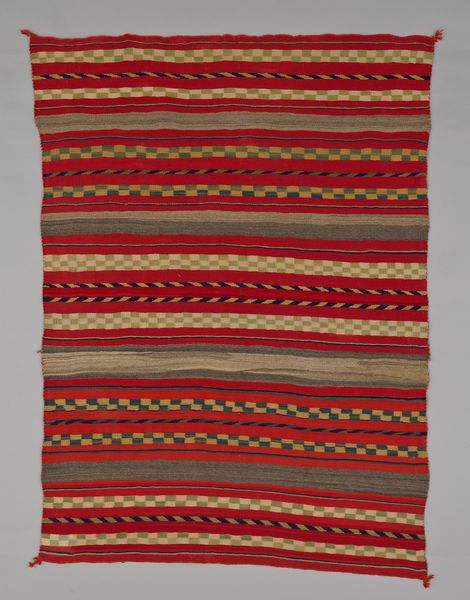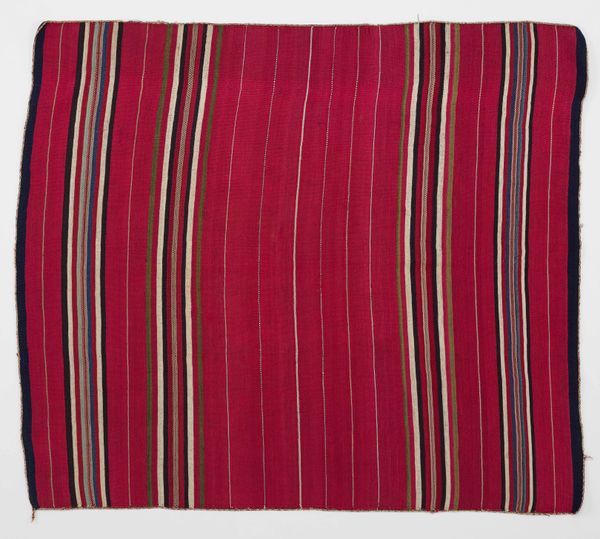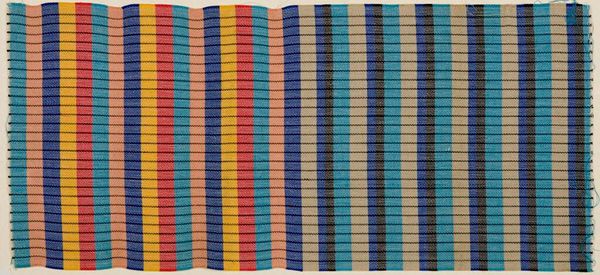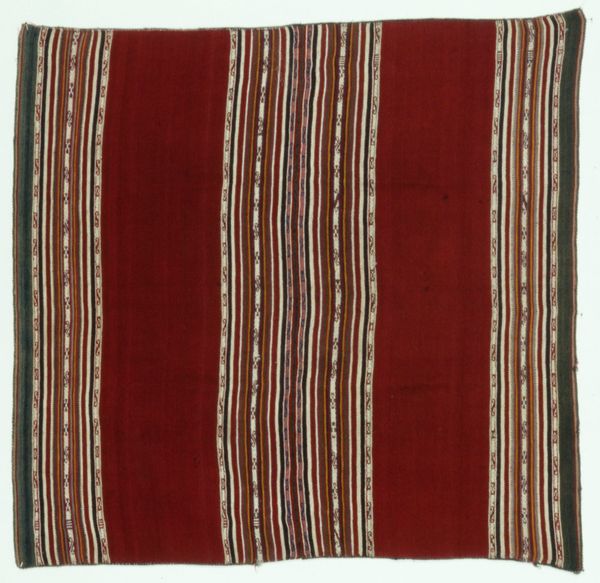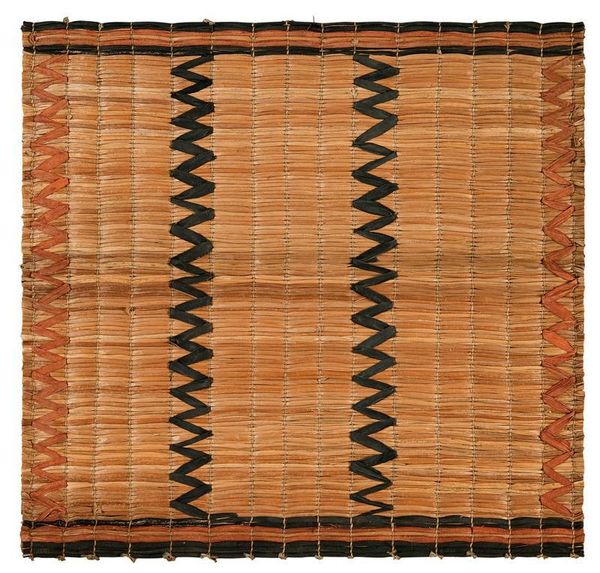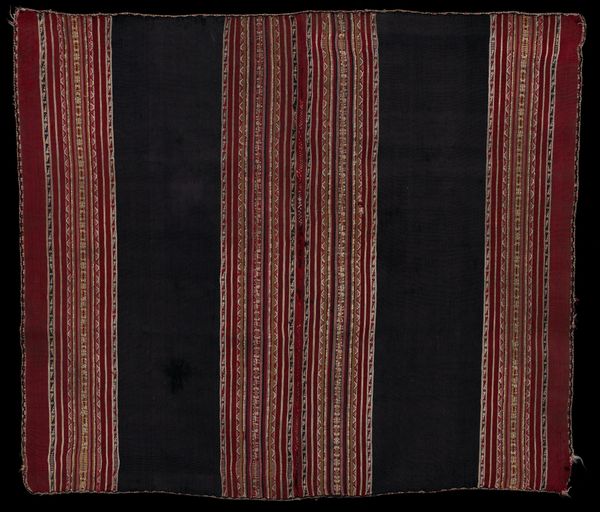
fibre-art, weaving, textile
#
fibre-art
#
weaving
#
textile
#
geometric pattern
#
geometric
#
indigenous-americas
Dimensions: 62.5 × 67.6 cm (24 5/8 × 26 5/8 in.)
Copyright: Public Domain
Curator: Take a moment to observe this piece, known as "Coca or Ceremonial Cloth (Inkuña)", originating from the Aymara people, likely crafted between 1850 and 1900. Editor: My immediate impression is of ordered harmony. The vertical stripes present a rigid structure, yet the subtle variations in color and texture create a pleasing visual rhythm. Curator: Indeed. Formally, we see a deliberate manipulation of line and color. The dominant vertical stripes guide the eye, while the central band offers a contrasting geometric pattern, creating a focal point. Consider the materiality – the wool lends a tactile quality that invites closer inspection of the weave's intricacies. Editor: Zooming out, these textiles historically weren't mere decoration; they were potent signifiers within Aymara society. Coca cloths held ceremonial importance, perhaps linked to rituals, social status, or the exchange of coca leaves. Woven into each thread is the cultural and spiritual landscape of the community that produced it. Curator: Precisely. Semiotically, the specific colors and patterns might carry symbolic meaning specific to Aymara traditions. Deciphering these codes could offer insight into their cosmology and belief systems. I am drawn to consider how these colours reflect an intimate dialogue between material practices and ways of seeing. Editor: From a contemporary perspective, consider its journey into a museum setting. Originally, these weavings existed as functional, integral components of community life. Now, as a museum artifact, its reception shifts. The institution imbues it with new layers of meaning, influencing how we perceive and interpret its artistic and cultural merit. Curator: A valid point. The shift from utilitarian object to art object drastically alters its contextual framework and the discourse surrounding it. Nevertheless, a close formal reading alongside an exploration of its socio-historical context yields invaluable insight. Editor: Absolutely. By paying attention to the piece, its texture, the social environment that birthed it, we cultivate a richer understanding of both art and its integral position in broader society.
Comments
No comments
Be the first to comment and join the conversation on the ultimate creative platform.
